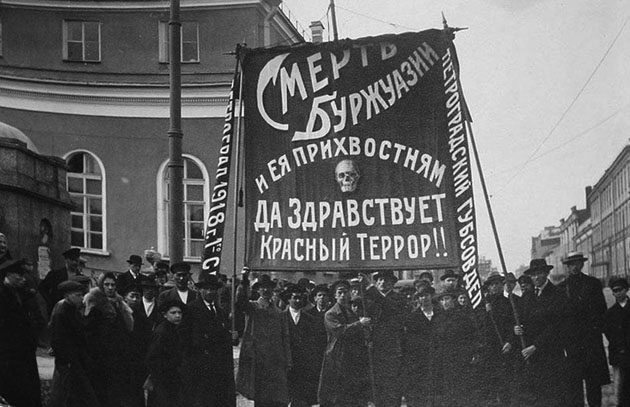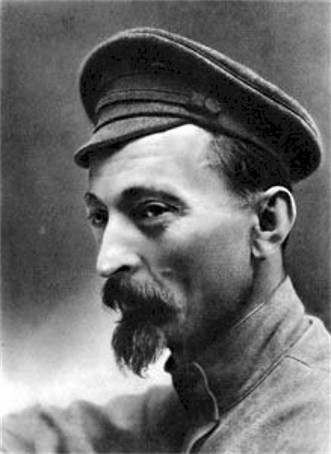Cheka
Cheka (VChK or Vserossiiskaia chrezvychainaia komissiia po borbe s kontrrevoliutsiei i sabotazhem [All-Russian Extraordinary Commission for Fighting Counterrevolution and Sabotage], popularly called ChK, Cheka, or chrezvychaika). Soviet security agency organized by F. Dzerzhinsky at the beginning of the revolution and confirmed by the decree of the RSFSR of 20 December 1917. Although formally it was responsible to the government, in reality the Cheka constituted a state within a state and acted independently. Whenever it could, it extended its operations into Ukraine, where it was formally established in December 1918 by decree of the Provisional Workers' and Peasants' Government of Ukraine as the All-Ukrainian Extraordinary Commission for Fighting Counterrevolution, Speculation, Sabotage, and Administrative Crimes in the Department of Internal Affairs. In 1919 it was headed by one of the chiefs of the Russian Cheka—Martin Latsis. On 30 May 1919 the decree on the All-Ukrainian Extraordinary Commission for Fighting Counterrevolution, Espionage, and Banditry and on Local Extraordinary Commissions was adopted. In 1920 the Central Administration for the Extraordinary Commissions was created and was subordinated to the government of Ukraine. On 5 May 1920 F. Dzerzhinsky came to Ukraine with 1,400 Russian Cheka agents and carried out a thorough purge of the Cheka apparat.
The Cheka justified its repressions and terror as the struggle ‘against counterrevolution, espionage, and banditry,’ but ‘banditry’ encompassed every activity of the government's political opponents. The Cheka carried out the policy of the so-called Red Terror with its mass killings, executions of hostages, coercion, and sadistic torture. It was notorious for its repressions in Ukraine in 1918–20, particularly in the cities during the retreat of the Red Army and during every new occupation. In 1920–2 the Cheka fought Ukrainian insurgents and terrorized the peasants. It destroyed the nationally conscious Ukrainian intelligentsia, particularly members of Ukrainian political parties. The atrocities that it carried out in Ukraine, under Martin Latsis in Kyiv, V. Yakovlev and M. Deich in Odesa, S. Saienko in Kharkiv, and Georgii Piatakov in the Donbas, were investigated by special commissions, which included civic leaders and foreigners, during Anton Denikin's occupation of Ukraine in the second half of 1919. With the introduction of the New Economic Policy and positive contacts with the West, the Soviet government tried to dissociate itself from the politics of terror and reorganized the Cheka into the GPU which was succeeded by the OGPU, NKVD, and KGB. This, however, has changed little in the nature of the Soviet security machine.
BIBLIOGRAPHY
Chernov, V. (ed). Ch-Ka: Materialy po deiatel’nosti chrezvychainykh kommissii (Berlin 1922)
Melgunov, S.P. The Red Terror in Russia (London 1925)
Scott, E.J. The Cheka (Oxford 1953)
Leggett, G. The Cheka: Lenin's Political Police (Oxford 1981)
Dukel’skii, S. ChK na Ukraine. Reprint of 1923 edn. (Benson, Vermont 1989)

.jpg)
.jpg)

.jpg)